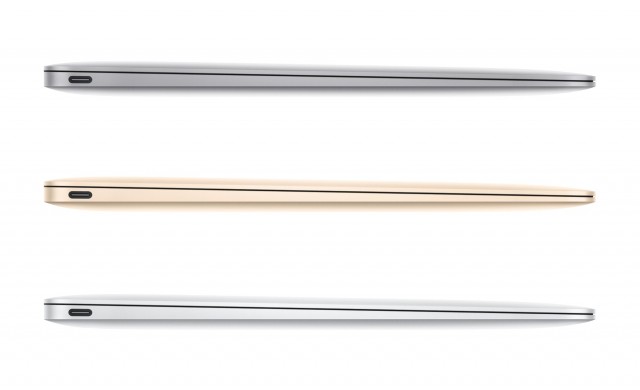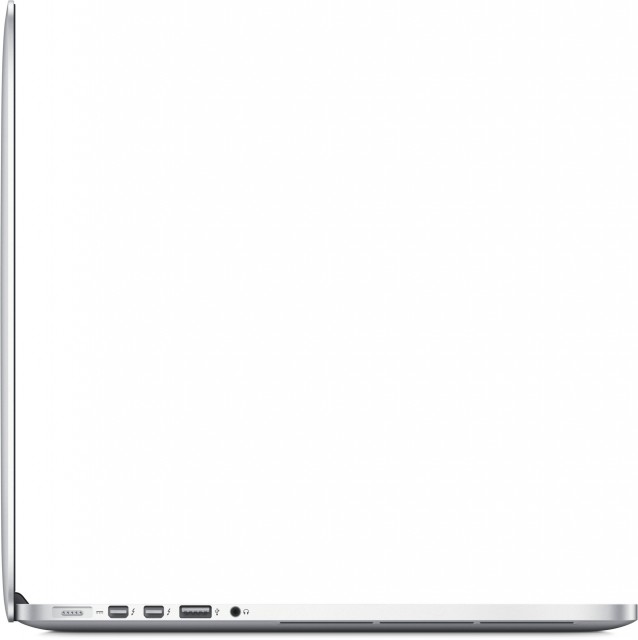Yes, Apple is today talking about wristwatches. But judging by those glowing logos I see absolutely everywhere all the time, it’s probably MacBooks that matter to you music creating folk.
Apple today has three items of computer news:
1. They’re introducing a new, 12″ display model called the “all-new MacBook” (note that exact wording).
2. They’re updating the 13-inch Macbook Pro with Retina Display.
3. They’re updating the MacBook Air.
(There are no changes to the 15″ model, but these revisions have historically been staggered.)
With Apple, nomenclature is everything. It’s been a while since Apple called anything “MacBook” without appending either the word “Air” or the word “Pro” to the end.
So, here’s what you need to know about the “all-new MacBook”: you don’t want it. Seriously, if you’re reading this right now, you’re not going to like it.
Just don’t panic yet. What you need to know about the Air and in particular the Pro is that nothing substantial changes, and that’s a good thing. So you won’t want the “all-new MacBook” – but Apple probably knows you won’t want it, and continues to take your money for the ones you do want.
The all-new MacBook will probably be a good machine for a lot of Apple’s customers. It’s thinner and lighter and more compact for people who just want an ultra-mobile machine. But there are tradeoffs for us that won’t make sense: the display is going to be all-but-impossible to see for music production work, the processor is underpowered (it’s a mobile variant of the Core chips in the bigger machines), and now it really has no ports. There’s a single USB-C connector, and nothing else. USB-C is the so-new-nothing-supports-it future of USB, the physical gateway to a faster variant of the USB bus itself.
Someday, both USB-C and the bus underneath may be relevant to music making. And I expect we will eventually see it on the MacBook Pro. But the fact that Apple didn’t put it there today suggests even they know that you don’t want it. No hardware supports it, many adapters that make it backwards-compatible aren’t even out yet, and you want more than one port for everything if you’re doing serious production work.
In fact, in a comparison many, many people will make in coming days, the port situation on the ultra-compact 12″ model is very similar to the iPad.
Update: You will be able to use multiple ports at once. A pricey multi-adapter will support power, HDMI, and USB, for instance. And you can break out USB to a hub. But notice what’s missing: Thunderbolt. I fully expect “Pro” models from Apple will continue to feature multiple ports, and this minimalism – and the pain that comes with it – will be limited to the ultra-compact consumer-targeted models. USB-C and adapters are inevitable someday on the Pro models, but they will almost certainly not be limited to just one port.
The reason you shouldn’t immediately panic about the future of the Mac is that Apple was already differentiating the Air from the Pro, making tradeoffs for a mass market that wanted portability while retaining Pro models for people who need more connectivity and power.
And that brings us to the Air vs. Pro divide again. Here’s the funny thing: the Air has gradually gotten closer to the Pro. Over time, the engineering requirements of mobility have made tradeoffs for thinness and lightness get easier, not harder.
Sure enough, the MacBook Air is improved today over the previous model.
- Faster CPU: fifth generation Intel Core.
- Refreshed graphics: integrated Intel HD Graphics 6000.
- Thunderbolt 2, delivering up to 20Gbps.
- Faster flash storage.
So, you want this MacBook Air more than you wanted the previous MacBook Air. And you do get Thunderbolt, which is cool for some audio hardware and storage expansion (and very cool for video, if you work with that).
The Air does hold its own with the MacBook Pro in terms of ports. You get two USB3 ports and a Thunderbolt port. (You’re just one Thunderbolt port shy of the Pro.) As the “all-new MacBook” stakes out consumer territory, the Air is drifting into producer territory. So let’s not start freaking out about how everything is turning into an iPad – it isn’t. (Apple thinks what Pros really want is Darth Vader’s powder room wastebasket, yes, but that’s another story. Hey, I want one, even if I can’t afford one.)
Still, even if the Air is improved, you probably still want the MacBook Pro. For a little less money and a half a pound less in weight, you have to settle for a non-Retina display, a slower processor, and an inability to max out internal storage or RAM as you can on the Pro. Oh, and the Pro also gives you a second Thunderbolt port and a better graphics card (Iris Graphics 6100 over Iris HD 6000) – those aren’t deal makers, but they’re a nice bonus.
Basically, everything is slightly better on the MacBook Pro 13″ with Retina Display:
The CPU is slightly faster – fifth generation Intel Core, 3.1 GHz tops.
The GPU is slightly faster – Intel 6100.
Flash storage can be up to two times faster (and it was already blazingly-fast on the previous model).
Battery life is slightly better.
And all of this is absolutely fantastic news —
— for anyone ready to buy the previous MacBook Pro. Why? Because the 13″ model is now something you can pick up in closeout sales. It was already a great mobile workhorse for audio production and even blazes nicely through light video work. I’m writing this on one now, and I abuse it sometimes 18 hours a day. (The 15″ remains appealing for its larger display and proper GPU, plus higher-grade specs, but the 13″ is a good choice on a budget.)
And there’s no reason to complain about the Pro. This machine is I think a great investment for a lot of people. The Retina Display is stunning, especially over long periods of use – and music apps are finally coming around to exploiting it. The internal RAM and storage is non-upgradeable, true – so max it out when you buy the machine. The price premium Apple charges is hefty, but you get high-spec, fast RAM and storage in return. (The internal flash drives are blazingly quick, and you really notice the difference in production tools. Plus, for big projects, you can always add fast USB and Thunderbolt media externally.) These are machines that can pay off their money you spend on them. You can make records; you can make iPhone apps. Nothing against PCs from other vendors – they still hold their own if you rely on the GPU, and desktop configuration works well, and a lot of people are happy with Windows. But Apple makes very competitive laptops.
I expect a lot of people will freak out about USB-C in the “all-new MacBook” and assume Apple is now coming for all your ports. I don’t think that’s the case for the forseeable future. Apple is showing a commitment to Thunderbolt as a “pro” bus – note Thunderbolt 2 on every single other model they sell.
The key is the word “Pro.” The advice I would give to anyone doing creative work is to buy the machine with “Pro” in the title, by astounding coincidence. So it seems Apple does have some strategy, and that involves what you want.
As for a watch, I recommend for now picking up a nice used Casio for a couple bucks if you tend to drop your iPhone on the pavement every time you look at the time. Speaking of which – ah, look at the time. I’ll let you all argue about this in comments. Have a nice night!
http://www.apple.com/mac/compare/
Photos courtesy Apple.


